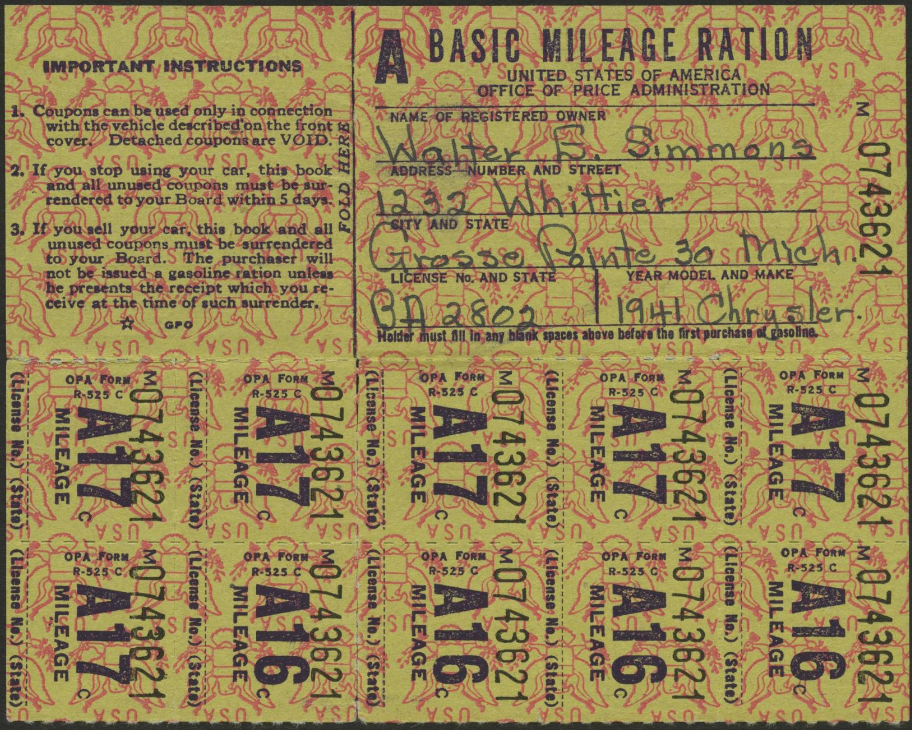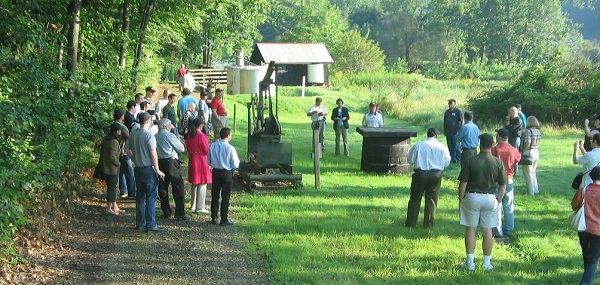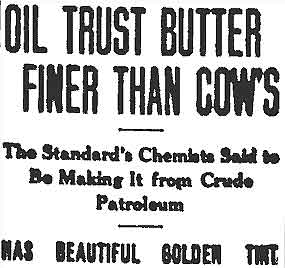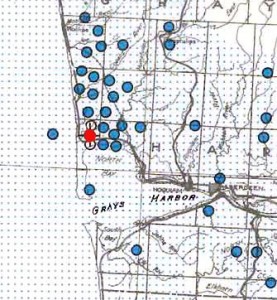August 14, 1986 – California Oil Museum Building listed as National Historic Place –
The original headquarters of the Union Oil Company in Santa Paula, California — constructed in 1890 and an oil museum since 1950 — was added to the National Register of Historic Places. Today the California Oil Museum on 1001 East Main Street, the renovated Union Oil offices can be toured on the second floor, above the former Santa Paula Hardware Company and Post Office. Union Oil moved its headquarters to Los Angeles in 1901.

The Union Oil Company headquarters building, built in 1890, is home of the California Oil Museum.
Also designated a Ventura County Cultural Heritage Landmark, the California Oil Museum includes working oilfield models, a 19th century cable-tool drilling rig, Union Oil gas station memorabilia, and an Energy Education Lab with STEM activities for students.
August 15, 1945 – End of World War II Gas Rationing
One day after President Harry Truman announced World War II was over, gasoline rationing ended in America. Food rationing had begun in early 1942 with rubber and gasoline added in December by the Office of Price Administration. Most civilian drivers received a windshield sticker with ration coupons for gasoline limiting them to four gallons a week. A ration book “B” sticker allowed business owners up to eight gallons a week.

World War II gasoline ration stamps and mileage card, Grosse Pointe, Michigan. Image courtesy Henry Ford Museum.
According to the National World War Two Museum, a “C” sticker was for people with professional occupations, an “M” sticker for motorcycles, and a “T” sticker for truck drivers. A 35 mph speed limit was established for the duration of the war. By the end of 1945, sugar remain the only commodity still being rationed.
August 16, 1861 – Oldest Producing Well drilled in Pennsylvania
What would become the world’s oldest continuously producing oil well was completed near Oil Creek at Oil City, Pennsylvania. The McClintock No. 1 well initially produced 50 barrels of oil a day from a depth of 620 feet. The well was completed 14 miles from Titusville, home of the first U.S. commercial oil discovery two years earlier.
The McClintock well is the oldest well in the world that is still producing oil at its original depth, according to the Oil Region Alliance.

Drilled in 1861, the McClintock well is pumped a few times a year to supply oil for souvenir bottles sold at the Drake Well Museum and Park in Titusville, Pennsylvania. Photo by Bruce Wells.
Donated by Quaker State in 1995, the well has been pumped monthly to produce up to 10 barrels of oil. A nearby historic marker identifies the well, but thousands of people pass by each year without knowing it’s there. Souvenir bottles of the oil are on sale in the gift shop of the Drake Well Museum in Titusville.
August 16, 1927 – High-Octane Gas powers Air Race to Hawaii
With a crowd of 50,000 cheering them on, eight monoplanes took off from an airfield in Oakland, California, in an air race over the Pacific. Dole Pineapple Company offered a $25,000 prize to the first plane to reach Honolulu, 2,400-miles away. Three months earlier, Charles Lindbergh had made the first solo trans-Atlantic flight of 1,500-miles.

Several competitors disappeared over the Pacific during the 1927 Dole air race. The winning aircraft today is on display at the Woolaroc Ranch near Bartlesville, Oklahoma.
A new aviation fuel developed by Phillips Petroleum — Nu-Aviation Gasoline — powered the winning “Woolaroc” monoplane for the deadly air race (two of the fuel-heavy planes crashed on takeoff, others were lost in flight). Woolaroc was named for Frank Phillips’ Bartlesville ranch and nature preserve.
Learn more in Flight of the Woolaroc.
August 17, 1785 – Oil Discovered Floating on Pennsylvania Creek
Two years after the end of the Revolutionary War, oil was reported floating on a creek in northwestern Pennsylvania. “Oil Creek has taken its name from an oil or bituminous matter being found floating on its surface,” noted a report by Gen. William Irvine.
“Many cures are attributed to this oil by the natives, and lately by some of the whites, particularly rheumatic pains and old ulcers,” Gen. Irvine wrote. He confirmed an earlier Army survey reporting Oil Creek, “empties itself into the Allegheny River, issuing from a spring, on the top of which floats an oil, similar to what is called Barbados tar (see Asphalt Paves the Way), and from which may be collected by one man several gallons in a day.”
August 17, 1915 – End of Hand-Cranked Auto Engines
Charles Kettering of Dayton, Ohio, patented an “engine-starting device,” the first practical electric starter for automobiles. Working as an engineer for Dayton Engineering Laboratories Company (DELCO), Kettering earlier had devised an electric motor to replace hand cranks on cash registers.
“The present invention is particularly applicable to automobiles, wherein an engine of the combustion or explosion type is employed, as a means of propulsion,” Kettering noted in his patent. Cadillac was the first manufacturer to add electric starters to its models; Ford Model Ts used hand cranks until 1919.
August 18, 1990 – Oil Pollution Act becomes Law
President George H. W. Bush signed the Oil Pollution Act of 1990, which was passed by the 101st Congress to strengthen the ability of the Environmental Protection Agency (EPA) to prevent and respond to catastrophic oil spills. Signed into law 17 months after the Exxon Valdez oil spill in Prince William Sound, Alaska, the act required vessels and oil storage facilities to submit to the federal government plans detailing how they would respond to large spills.
August 18, 2007 – Astrobleme Museum opens in Oklahoma
Ames, Oklahoma, celebrated the opening of its Astrobleme (meteor crater) Museum, designed to educate visitors about a meteor impact that led to a major oilfield discovery 450 million years later. Located about 20 miles southwest of Enid, the Ames meteor crater was buried by about 9,000 feet of sediment, making it barely visible on the surface. Most geologists believed impact craters unlikely locations for petroleum.

A meteorite hit Oklahoma 450 million years ago, producing a crater thousands of feet deep and eight miles wide. It proved to be one of six oil-producing U.S. impact craters.
Although wells were drilled nearby, no one had attempted to reach deep into the hidden, eight-mile-wide Ames crater in Major County. In 1991, Harold Hamm, CEO of Continental Resources, decided to drill deeper than usual for the area – about 10,000 feet – and found oil. His Ames crater discovery well uncovered what became the most prolific of the six oil-producing craters found in the United States.

Oklahoma’s Ames Astrobleme Museum, which opened in 2007, requires no staff to educate visitors. Photo by Bruce Wells.
“The Ames Astrobleme is one of the most remarkable and studied geological features in the world because of its economic significance,” explained independent producer Lew Ward in 2007. The potential of drilling in impact craters got the attention of oil companies worldwide.
Learn more in Ames Astrobleme Museum.
August 19, 1909 – Canadian Journal lampoons Standard Oil
“The Standard Oil Company has decided to drive the cow and the dairyman out of business,” declared the Stanstead Journal of Quebec, reporting from Jersey City, New Jersey. “Its skilled chemists have discovered a process whereby they can make gilt-edge butter as a byproduct of crude petroleum.”

Journalists found humor in the approaching breakup of the Standard Oil Trust.
The journal fancifully proclaimed, “The chemists, in the steps leading up to the petroleum butter discovery, also have perfected a cheap process by which they can convert the kerosene into sweet milk.”
August 19, 1957 – First Commercial Oil Well in Washington
The first and only commercial oil well in the state of Washington was drilled by the Sunshine Mining Company. The Medina No. 1 well flowed 223 barrels a day from a depth of 4,135 feet near Ocean City in Grays Harbor County. A well drilled six years earlier produced 35 barrels of oil a day, but it was deemed noncommercial and abandoned.
The Medina No. 1 well produced 12,500 barrels before being capped in 1961.

Surrounded by unsuccessful attempts, Washington’s only commercial oil well (red) was capped in 1961.
By 2010, about 600 oil and natural gas wells had been drilled in Washington, but large-scale commercial production never occurred. The state’s most recent production — from the Ocean City field — ceased in 1962, according to the Washington Commissioner of Public Lands. No oil or gas has been produced since.
August 20, 1971 – Penn-Brad Oil Museum opens in Pennsylvania
Preserving the history of its 1880s “billion dollar oil boom,” at Bradford, Pennsylvania, the Penn-Brad Oil Museum opened in nearby Custer City. At the end of the 19th century, the region produced high-quality oil from the upper Devonian Bradford Sands that accounted for more than 80 percent of U.S. production, according to the museum, which includes a 72-foot standard cable-tool derrick.
_______________________
Recommended Reading: Western Pennsylvania’s Oil Heritage (2008); Winners’ Viewpoints: The Great 1927 Trans-Pacific Dole Race
(2009); Glory Gamblers
(1961); Groundbreakers: The Story of Oilfield Technology and the People Who Made it Happen (2015); Oil And Gas In Oklahoma: Petroleum Geology In Oklahoma
(2013); Standard Oil Company: The Rise and Fall of America’s Most Famous Monopoly
(2016). Your Amazon purchase benefits the American Oil & Gas Historical Society. As an Amazon Associate, AOGHS earns a commission from qualifying purchases.
_______________________
The American Oil & Gas Historical Society (AOGHS) preserves U.S. petroleum history. Become an AOGHS annual supporting member and help maintain this energy education website and expand historical research. For more information, contact bawells@aoghs.org. © 2023 Bruce A. Wells. All rights reserved.


